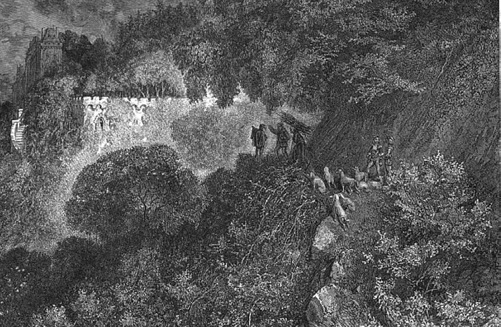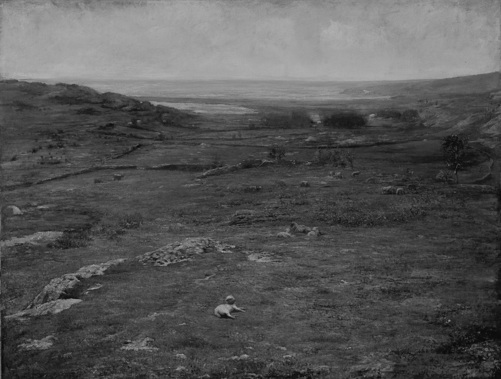Wm & H'ry: Literature, Love, and the Letters Between Wiliam and Henry James (7 page)
Read Wm & H'ry: Literature, Love, and the Letters Between Wiliam and Henry James Online
Authors: J. C. Hallman
Tags: #History, #Philosophy, #Modern (16th-21st Centuries), #Biographies & Memoirs, #Politics & Social Sciences, #Arts & Literature, #Modern, #Philosophers, #Professionals & Academics, #Authors, #19th Century, #Literature & Fiction

reach.
The Tragic Muse
’s Peter Sherringham reminds Bridget Dormer “of a Titian,” and Nick Dormer later
feels an ineffectual longing to have “a go” at Titian
and Tintoretto.
The Wings of the Dove
’s Susan Shepherd recognizes that the story’s advancing intrigue has become “a Veronese picture, as near as can be.” In both
novels, art betrays consciousness: Miriam Rooth is “apt
to drop” particular observations while “under the sug-
gestion” of Titian or Bronzino, and Milly Theale speaks
at one moment of her mysterious illness “almost as if
under [the] suggestion” of a Bronzino, and at another
finds herself surrounded by Turners and Titians at Lon-
don’s National Gallery, which seem to “[join] hands”
about her and trigger an ensuing reverie.
This last description seems almost to cite a plaintive
remark Wm once made to H’ry as his career trajectory
in science and academia began to take shape. Painting
was slipping farther and farther away:
50
Hallman_firstpages5x.indd 50
9/4/12 6:26 PM
But I envy ye the world of Art. Away from
it . . . we sink into a flatter blanker kind of
consciousness, and indulge in an ostrichlike
forgetfulness of all our richest potentialities—and
they startle us now and then when by accident
some rich human product, pictorial, literary, or
architectural slaps us with its tail.
Wm had always approached art more academically
than H’ry, comparing works so as to plot the arc of
art history, attempting to gauge whether it was the
Germans or the Venetians who were the true broth-
ers of Greeks, etc. In 12, he planned an essay that
would apply natural selection to competing schools
of art—artistic Darwinism—but never executed it. By
the time of the writing of
The Principles of Psychology
,
art had receded completely, becoming less overt subject
matter than convenient metaphor. “This chapter is like
a painter’s first charcoal sketch upon his canvas,” he
wrote at the start of “The Stream of Consciousness.”
A field of grass might
appear
green, he allowed a short time later, describing the complexity of subjective sensation, “yet a painter would have to paint one part of
51
Hallman_firstpages5x.indd 51
9/4/12 6:26 PM
it dark brown, another part bright yellow, to give it its real sensational effect.”
That art faded into Wm’s background just as it
climbed into H’ry’s foreground expressed figuratively
what had once been expressed literally. In 1, Wm
offered H’ry invaluable criticism in response to a long,
early story. “Gabrielle de Bergerac” employs a now-
familiar Jamesian tool: a foreground “frame tale” in
which a character somehow bequeaths a story to a
notably H’ry-like narrator, and a background tale that
is repeated for the reader. Wm objected to the ending
of “Gabrielle de Bergerac,” which after a long dip into
a background drama returns briefly to the foreground
frame tale. “Very exquisitely touched,” Wm wrote,
“but the denouement bad in that it did not end with
Coquelin’s death. . . . The end is both humdrum and
improbable.” What he meant was that the story could
remain asymmetrical. H’ry didn’t need to return to
the foreground—the story could simply fade into its
background and end there. As it happened, the interest
of backgrounds was a subject actually described in the
background story of “Gabrielle de Bergerac”: a char-
acter recalls Gustave Doré’s illustrations of Charles
Perrault’s
Sleeping Beauty
, in particular an image in 52
Hallman_firstpages5x.indd 52
9/4/12 6:26 PM

which three shadowed foreground figures gesture off
to a foggy but better lit castle in the distance. It was
the light
and
the vagueness, the story claimed, that drew the eye to the rear of the image and triggered
the working of the mind:
What does the castle contain? What secret is
locked in its stately walls? What revel is enacted
in its long saloons? What strange figures stand
aloof from its vacant windows? You ask the
question, and the answer is a long revery.
For H’ry, the castle was like the citadel of conscious-
ness forever running in the background of human in-
53
Hallman_firstpages5x.indd 53
9/4/12 6:26 PM
tercourse; it was the more compelling tale whirling
behind
whatever simple plots storytellers strung clumsily together. H’ry carefully applied Wm’s advice whenever
he employed the foreground frame tale in the future,
most notably in
The Turn of the Screw
,
which ends the harrowing account of the governess’s haunting with
the dramatic death of a child, and never returns to the
circle of friends who are listening to the story read
aloud around a Christmas fire.
While H’ry clearly benefited from Wm’s advice, it’s
not at all clear that Wm understood
how
his advice had become useful. Outside of stories, he wanted
nothing
left in the background. This was made apparent in
1, when Wm wrote to H’ry of visiting John La Farge
to view several paintings then still under way. One in
particular,
Paradise Valley
, a broad image of green fields near Newport, absolutely frayed Wm’s nerves. The
painting had begun with a large female figure situated
in the foreground, a white-draped presence occupying
almost two-thirds of the large canvas.
Sometime during the work on the piece, La Farge
had been moved to paint over the figure completely,
leaving only the background and a tiny baby sheep.
Wm couldn’t get his head around it. He understood
54
Hallman_firstpages5x.indd 54
9/4/12 6:26 PM

the landscape, which was “as big as all out doors and
flooded with light even in its botchy state.” But he
couldn’t begin to fathom why La Farge had eliminated
the woman in the foreground. “He ought to repaint
a figure in it no matter how ‘quaint’ it will look to the vulgar.”
55
Hallman_firstpages5x.indd 55
9/4/12 6:26 PM
They had begun to disagree even about what it meant
to be “vulgar.”
H’ry took his cue from Balzac.
Eugenie Grandet
’s
eponymous heroine, for example, comes from “a class
of females found in the middle ranks of life, whose
beauty appears vulgar.” But Eugenie is not vulgar her-
self: “There was nothing
pretty
about Eugenie; she was beautiful with that beauty so easily overlooked, and
which the artist alone catches.” H’ry spent a lifetime
trying to apply a similar principle to language. In “The
Question of Our Speech” (an address first delivered in
105 to an audience of “
,
or hundred
people” in Philadelphia) he warned of the “vulgarization” resulting
from “common schools and the ‘daily paper,’” and sug-
gested that “avoiding vulgarity, arriving at lucidity” was an art to be cultivated if we hoped to distinguish our
speech from “the barking or the roaring of animals.”
In other words, to be vulgar was to be less obscene
than obvious. For Wm, it had always meant something
slightly different. His pained work on the style of his
Grimm review had struck him as a balancing act be-
tween “pomposity & vulgar familiarity.” He allowed
56
Hallman_firstpages5x.indd 56
9/4/12 6:26 PM
that style meant leaving the essential unspoken—of
Turgenev, he wrote in one letter, “[He] has a sense of
worlds within worlds whose existence is unsuspected
by the vulgar”—but he also equated it with the careless
redundancy of writers who fetishized an offhand air. In
13, Wm fretted over “the determination on the part
of all who write now to do it as amateurs, & never use the airs & language of a professional, to be first of all a layman & a gentleman, & to pretend that your ideas came to you accidentally.” A decade and a half earlier,
he had criticized H’ry’s stories for giving “a certain
impression of the author clinging to his gentlemanli-
ness tho’ all else be lost.”
Which was actually prescient. By the late 10s, H’ry
had begun to tire of fiction; drawn by the financial lure of the theater, he had begun dabbling as a playwright.
The public aspect of the experiment discomfited him
from the start. “There wd. be much good for me to
tell you of my Play & its successors if I were to speak of the business in any way,” he wrote in June 10.
“But I must not, for awfully good reasons, & I beseech you not to either.” It wasn’t that he was afraid; it was
that there was decorum to consider. The next month,
he calmly accepted the lackluster performance of his
57
Hallman_firstpages5x.indd 57
9/4/12 6:26 PM
most recent novel. A writer couldn’t concern himself
with “popularity,” he wrote. One “must go one’s way
& know what one’s about” and understand that it was
popularity enough if a work made any “audible vibra-
tion.” A few months later, however, he could barely
contain his excitement over the preparations for the
opening of
his stage adaptation of
The American.
He apologized for his “vulgarities” in this regard; he happily related details of rehearsals, of venue, and of fu-
ture plays that might also be put into production. He
had a “kind of mystic confidence in the ultimate life of
the piece,” and claimed he had always known that plays
were the genre to which his work was most suited.
Critics disagreed;
The American
was panned. The show ran only sixty-nine nights; H’ry made no profit from it.
“TELL THIS TO NO ONE,” he told Wm.
He kept at it, frustrating as it was. Over the next
few years, he changed producers and suffered through
endless strings of setbacks and delays. H’ry wasn’t used
to working with others. “They simply kicked me . . .
out of the theatre,” he wrote in 14. “How can one
rehearse with people who are dying to get rid of you?”
H’ry hadn’t even employed a literary agent for the first
fifteen years of his career. “I can
meet
these horrors, in a 58
Hallman_firstpages5x.indd 58
9/4/12 6:26 PM
word, I think (for another year),” he wrote finally, “but I can’t
talk
about them.”
Wm valiantly resisted the urge to remind H’ry that
he had offered him fair warning. Back when H’ry first
showed interest in the theater, Wm related a story of
stumbling across a street poster advertising the attrac-
tions of a play soon to open: “NO PLOT—ALL FUN!”
“What a relief to the intellect to have
no
plot!” Wm wrote. His point was that in writing for the stage one
needed to remain vigilant to “the qualities that the
stage requires.” He advised H’ry to “cold bloodedly
throw in enough
action
to please the people.” In 14, Wm invited several friends to his summerhouse in New
Hampshire to read through several of H’ry’s plays as a
group. They were received, Wm was forced to admit,
“with a certain tinge of disappointment.” The problem
of one was that “the
matter
[was] so slight.” In another, a character failed to “show her inside nature enough.”
